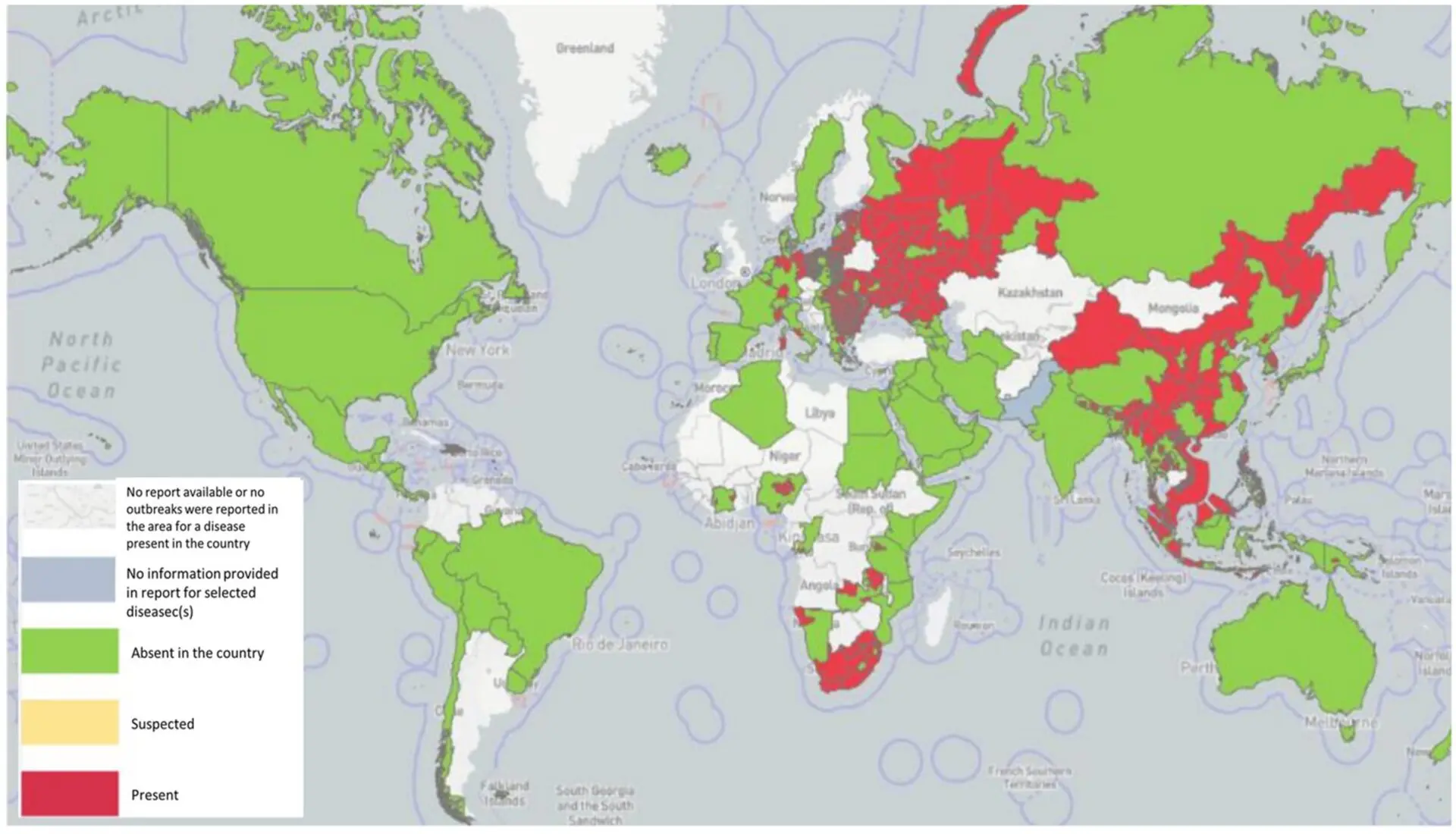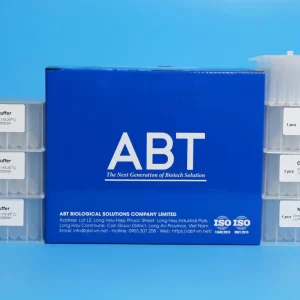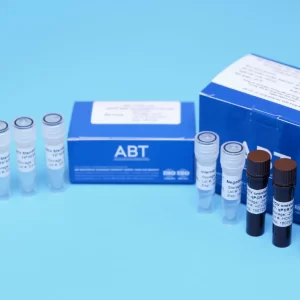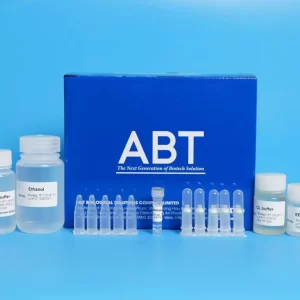History of African swine fever (ASFV) outbreaks
The first outbreak was recorded in pigs raised in East Africa (Kenya) in 1920 and in 1926, South Africa also had a similar epidemic. Then the disease was also recorded in Angola (1932), Northern Mozambique (1932). 1954), most countries in central and southern Africa, then spread to West Africa (Senegal (1978 OIE) and Guinea Bissau 1959)
Since 1978, at least 26 African countries have declared African swine fever

African Swine Fever (ASF) is the most widespread and devastating disease in the pig industry. The transmission routes of this virus are very diverse, they can be transmitted directly through the nose-mouth, gastrointestinal tract, from mother to child, or can be transmitted indirectly through blankets. Farms are exposed to viruses, as well as insects and vehicles.
In addition to its rapid spread, the African swine fever virus, once introduced, will cause very severe symptoms in farmed pigs such as high fever, loss of appetite, bloody diarrhea, miscarriage, skin bleeding, pulmonary edema, etc. enlarged spleen and other dangerous symptoms. The virus can also survive for several months in finished meat, affecting consumer health.
Introduction of TopSPEC® ASFV qPCR Kit
Types of samples used:
- Specimens from spleen, tonsils, lymph nodes, kidneys from pigs: ground into a 10% suspension with sterile physiological water solution or PBS. Then centrifuge at 1500 rpm for 10 minutes. Collecting the supernatant can be used to diagnose and detect African swine fever virus using qPCR reaction.
- Whole blood sample: blood is collected in a specialized tube containing anticoagulant (do not use a tube containing heparin because it will inhibit the reaction).
- Serum: Take 3 mL of blood into a tube (does not contain EDTA and heparin anticoagulants). Then, separate the serum by centrifugation at 3000 rpm for 15 minutes. The serum is then transferred into the tube
- Swab samples environment, tools, vehicles,…
TopSPEC® ASFV qPCR Kit is a test kit that detects the presence of the virus that causes African swine fever – Vp72 gene – in herds and farming environments. Early detection of the pathogen helps prevent serious consequences caused by ASFV.
Highlight
- Simple procedure
- Optimize the PCR time to 1.5 hours.
- Various input sample types
- High specificity and sensitive
Specifications
| Target | African Swine Fever Virus – gene Vp72 |
| Sample type | Specimens from spleen, tonsils, lymph nodes, kidneys; whole blood, serum |
| Input sample volume | 200 µL |
| DNA volume | 5 µL |
| Color channel detection | FAM: discovery of gene agent Vp72
HEX: internal control |
| Technology | TaqMan probe |
| PCR time | 1h30m |
| Specificity | Only ASFV is detected |
| Component | ASFV qPCR mix, negative control, positive control, internal control, PCR tube |
| Storage | 12 months at -20oC |
Recommended extraction kit
TopPURE® Blood DNA extraction kit (HI-132)









